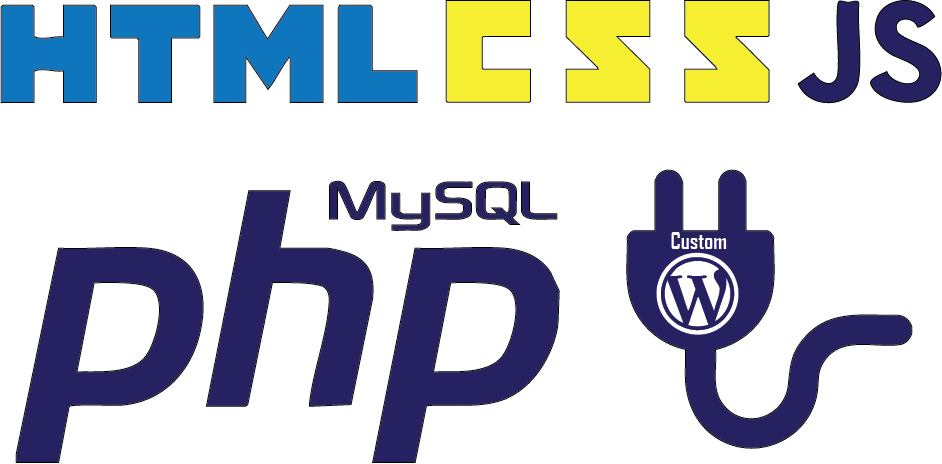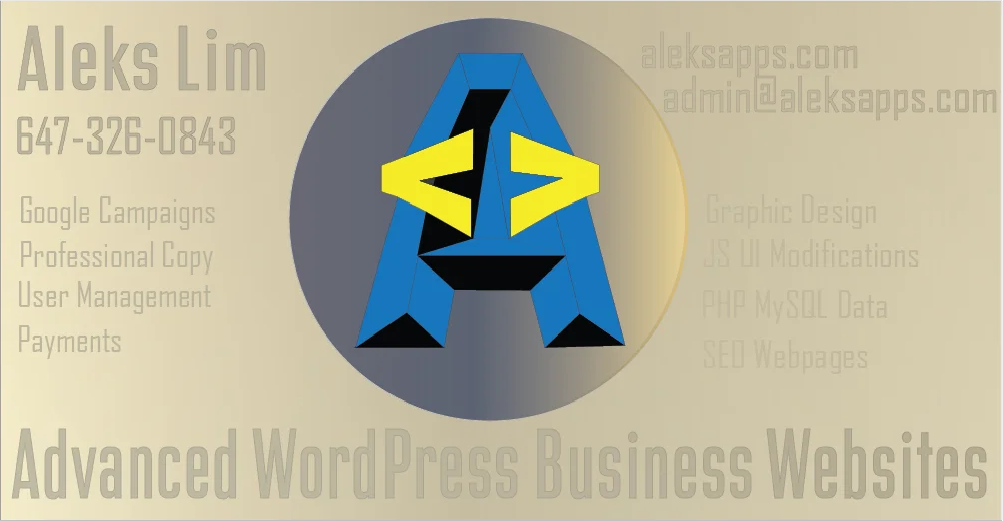
$20000 Value for Under $5000 Cost
HTML | WordPress | UI/UX
HTML for High-Performance Website UI: Dropdowns, Sliders, Forms, Payments & More
Aleksandar Lim - September 02, 2025
HTML (HyperText Markup Language) is the structural backbone of every page on your website. It defines what exists on the screen—navigation, sections, buttons, forms—while CSS makes it beautiful and JavaScript makes it interactive. Below, I’ll show how HTML powers real UI components, how it differs from JavaScript, and exactly how I extend and customize HTML inside WordPress (Gutenberg/Elementor) to give you full control over your brand’s look and experience.
What HTML Is (and Isn’t)
HTML is a declarative language. You describe what is on the page—headings, paragraphs, images, lists, forms, buttons, navigation—using semantic tags like <header>, <nav>, <section>, <article>, <form>, and <button>. The browser reads this structure and renders it accordingly.
JavaScript is procedural (imperative). It tells the browser how to do things step-by-step—react to clicks, fetch data, animate elements, validate forms, run sliders, and more.
In production websites, HTML + CSS + JavaScript + PHP work together:
- HTML provides structure and semantics.
- CSS handles layout, colors, typography, responsiveness.
- JavaScript adds interactivity (dropdown logic, sliders, validation).
- PHP powers the server side (WordPress themes, templates, dynamic content).
Navigation & Dropdown Menus
HTML structures the menu; CSS/JS enhance it. You can build multi-level menus that expand on hover or tap.
Sliders & Carousels
HTML lays out the slides; CSS/JS handle transitions. Here’s a tiny, no-JS demo for illustration:
Hero Sections & Background Images
Use semantic HTML for the section and CSS for the background image & contrast. This keeps content accessible and on-brand.
Payments, Registration & Forms
HTML forms collect data; JavaScript validates; PHP (or your payment gateway) processes securely. Examples:
- Payment: Embed a gateway button or checkout link (Stripe/PayPal/WooCommerce).
- Registration/Login: Use accessible
<form>elements with required fields. - CTAs: Clear, action-oriented buttons styled via CSS.
Copy-Ready HTML Snippets
Accessible Dropdown (Structure)
<nav aria-label="Primary">
<ul class="menu">
<li class="has-submenu">
<button aria-expanded="false" aria-controls="services-sub">Services</button>
<ul id="services-sub" hidden>
<li><a href="/wordpress-dev">WordPress Development</a></li>
<li><a href="/custom-crm-ui">Custom CRM UI</a></li>
<li><a href="/seo">SEO Landing Pages</a></li>
</ul>
</li>
<li><a href="/work">Work</a></li>
<li><a href="/contact">Contact</a></li>
</ul>
</nav>Add a tiny JavaScript snippet to toggle hidden and update aria-expanded for full accessibility.
Payment Button (Gateway Link)
<a class="btn" href="https://checkout.stripe.com/c/pay_xxx" rel="noopener" target="_blank">
Secure Checkout
</a>Registration Form (Client-Side Required Fields)
<form action="/register" method="post">
<label>Full Name
<input type="text" name="name" required>
</label>
<label>Email
<input type="email" name="email" required>
</label>
<label>Password
<input type="password" name="password" minlength="8" required>
</label>
<button type="submit">Create Account</button>
</form>CTA Button
<a href="#cta" class="btn" role="button">Get a Free UI Review</a>How I Integrate & Extend HTML in WordPress
Whether your site uses Gutenberg, Elementor, or another builder, I can add or modify HTML anywhere it matters while keeping everything aligned with your brand and theme.
| Where | What I Do with HTML | Typical Use |
|---|---|---|
| Gutenberg → “Custom HTML” block | Paste precise HTML (and scoped CSS/JS) for advanced UI sections. | Custom forms, pricing tables, CTA modules, embedded widgets. |
| Elementor → “HTML” widget | Embed bespoke components beyond the theme’s presets. | Dropdown megamenus, sliders, interactive cards. |
| Theme/Child Theme | Edit template parts in a child theme to safely override markup. | Header/nav layout, single post/product templates, footers. |
| Shortcodes | Register PHP shortcodes that output custom HTML on any page. | Reusable CTAs, forms, feature grids. |
| Plugins | Extend plugin output with filters/actions to adjust HTML structure. | WooCommerce product cards, checkout fields, account areas. |
Bottom line: I have full control over your site’s UI. I can modify existing HTML that ships with your theme, or inject tailor-made HTML into builder blocks—then layer in CSS for styling and JavaScript for behavior. That means your pages don’t have to look like everyone else’s template—they can be purpose-built to convert.
Concrete Examples on Real Sites
- Account Dashboard: Custom HTML cards to list recent orders (last 30 days) with filters and “View Invoice” buttons.
- Directory Listings: User-submitted profiles rendered via semantic HTML for fast, accessible browsing and powerful search.
- Lead Forms: Branded, multi-step HTML forms with progress indicators and inline validation to boost completion rates.
- Pricing/Plans: Responsive HTML tables with “Choose Plan” CTAs that go straight to checkout.
Quick FAQ
Is HTML enough to build a complete UI?
HTML defines the structure. To complete a modern UI, we style with CSS and enhance with JavaScript. WordPress (PHP) then feeds dynamic content into that markup.
Can we keep our theme but still customize heavily?
Yes. I can override or extend theme markup with child themes, shortcodes, and builder HTML blocks—keeping your brand intact while adding advanced features.
What about site speed and SEO?
Clean, semantic HTML improves accessibility, core web vitals, and crawlability. I also optimize media, minimize scripts, and keep the DOM lean for faster pages.
Ready to Upgrade Your UI with Clean, Flexible HTML?
Let’s turn your WordPress site into a polished, conversion-focused experience—custom dropdowns, sliders, forms, payment flows, and dashboards that match your brand exactly.
